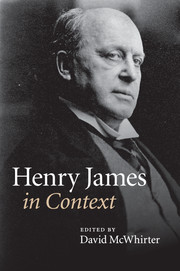Book contents
- Frontmatter
- Contents
- List of Illustrations
- Notes on Contributors
- Preface
- Abbreviations
- Chronology
- Part One Life and career, times and places
- Part Two Historical and cultural contexts
- Chapter 9 Aestheticism and Decadence
- Chapter 10 Authorship
- Chapter 11 Children
- Chapter 12 Consumer culture
- Chapter 13 Cosmopolitanism
- Chapter 14 Courtship, marriage, family
- Chapter 15 Ethics
- Chapter 16 Language
- Chapter 17 Law
- Chapter 18 Manners
- Chapter 19 Media and communication technologies
- Chapter 20 Modernism
- Chapter 21 Money and class
- Chapter 22 Museums and exhibitions
- Chapter 23 Nationalism and imperialism
- Chapter 24 Print culture
- Chapter 25 Psychology
- Chapter 26 Race
- Chapter 27 Realism and naturalism
- Chapter 28 Sexualities and sexology
- Chapter 29 Social sciences and the disciplines
- Chapter 30 Things
- Chapter 31 Time
- Chapter 32 Travel and tourism
- Chapter 33 Urbanity
- Chapter 34 Visual culture
- Chapter 35 Women and men
- Chapter 36 Work
- Part Three Reception
- Further reading
- Index
- References
Chapter 22 - Museums and exhibitions
Published online by Cambridge University Press: 05 August 2014
- Frontmatter
- Contents
- List of Illustrations
- Notes on Contributors
- Preface
- Abbreviations
- Chronology
- Part One Life and career, times and places
- Part Two Historical and cultural contexts
- Chapter 9 Aestheticism and Decadence
- Chapter 10 Authorship
- Chapter 11 Children
- Chapter 12 Consumer culture
- Chapter 13 Cosmopolitanism
- Chapter 14 Courtship, marriage, family
- Chapter 15 Ethics
- Chapter 16 Language
- Chapter 17 Law
- Chapter 18 Manners
- Chapter 19 Media and communication technologies
- Chapter 20 Modernism
- Chapter 21 Money and class
- Chapter 22 Museums and exhibitions
- Chapter 23 Nationalism and imperialism
- Chapter 24 Print culture
- Chapter 25 Psychology
- Chapter 26 Race
- Chapter 27 Realism and naturalism
- Chapter 28 Sexualities and sexology
- Chapter 29 Social sciences and the disciplines
- Chapter 30 Things
- Chapter 31 Time
- Chapter 32 Travel and tourism
- Chapter 33 Urbanity
- Chapter 34 Visual culture
- Chapter 35 Women and men
- Chapter 36 Work
- Part Three Reception
- Further reading
- Index
- References
Summary
Above the entrance to the Galerie d’Apollon of the Louvre, famously identified by James as the scene of ‘the most appalling yet most admirable nightmare’ of his life (A, 196), a commemorative inscription serves as a reminder of the museum’s revolutionary origins: ‘La musée du Louvre / fondé le 16 septembre 1792 / par decrét de l’assemblée législative / a été ouvert le 10 aout 1793 en éxecution d’un decrét rendu par la convention national’. By celebrating the Louvre’s opening on the anniversary of the collapse of the Bourbon monarchy, the government proclaimed a radically unprecedented, democratic institution and celebrated an alliance between the artworks it contained, now made available to public view, and forces of liberation. Explicitly, the Republic declared itself, in the former seat of imperial privilege, as the liberator of the French people from monarchical dominance and of works of art from royal enclosure; implicitly, it suggested that such art was itself generated by and the repository of a similarly radical, exalted vision. The origins and early policies of the Louvre, especially as regards the political rhetoric by which acquisitions from other European nations were justified, are hardly untainted by expedient ideologies. Yet in considering James’s representations of museums, as well as exhibitions, in his fictional, critical or autobiographical narratives, and particularly his use of the Louvre itself, the association of this modern institution with liberating forces is highly suggestive, not least for the additional perspective it offers on the dense psychodrama of James’s dream. The Louvre’s origin in particular raises questions regarding how such institutions and the modern phenomena of exhibitions define themselves as educational places of enlightenment wherein new forms of identity may be forged while also being linked to violent acts and aspirations to power. It entangles ideas of freedom with redefined social arrangements or ideas of historical order that might generate individual self-realization but could also constrict or restrain that process. In a persuasive account of the nineteenth-century creation and democratization of museums and exhibitions, Tony Bennett has argued that the ‘exhibitionary complex’ sought ‘to organize and co-ordinate an order of things and to produce a place for the people in relation to that order’; it celebrated a place ‘accessible to all’ that also conferred on society’s new citizens the benefit of being ‘visible’ to themselves.
- Type
- Chapter
- Information
- Henry James in Context , pp. 234 - 245Publisher: Cambridge University PressPrint publication year: 2010
References
- 1
- Cited by



